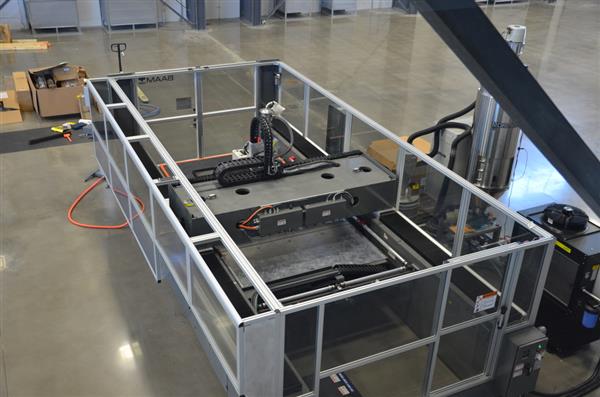BAAM fast 3D printing systems continues to dominate the sector. The 11th buyer of this systme, Additive Engineering Solutions(AES) aims to expand its service with faster printing.
Developed by Cincinnati Inc., and firstly used in the world’s first 3D printed car Strati, BAAM(Big Area Additive Manufacturing) welcomes new customers. Serving in metal welding and engineering, AES preferred BAAM for its facility.
Additive Engineering Solutions’ large-scale industrial 3D printer will mark the 11th BAAM 3D printer sold by Cincinatti, Inc. The other 3D printer models are operating primarily within universities, labs, or large companies. AES will be the first service bureau to use the BAAM 3D printer. This means that not only will AES use the 3D printer for its own solutions, but will offer its large-scale 3D printing services on a contract basis, especially to companies in Ohio’s Northeast.

Expectations from The Investment are High
Interestingly, the Akron-based solutions company, which was founded in August 2016 by Austin Schmidt and Andrew Bader, never intended to purchase a 3D printer and was only convinced to do so because of remarkable advantages offered by the BAAM system. Schmidt and Bader were shown the technology on a company visit to the Oak Ridge National Laboratory, where BAAM was developed.
With a BAAM printer at their disposal, AES plan to broaden their services. Now, the company can be used to print large scale parts that cannot be produced with smaller machines. Of the 11 BAAM machines Cincinnati Inc. has sold, this is the first to a service bureau – the rest have been purchased by universities, labs and large companies using the machines for their own benefits. Since Cincinnati Inc. often receive enquiries about printing parts, a service it provides without it being its main purpose, AES may now be on hand to support Cincinnati’s customers.
“We are excited to be bringing the BAAM technology online,” AES Co-founder Austin Schmidt said; “Currently, none of the 10 BAAM printers in existence are available for contract use. They are either at research facilities or at OEMs behind closed doors. Our BAAM will be the first machine available globally for contract use. Since the technology was unveiled in 2014, many great applications have been developed. However, there isn’t the capacity or bandwidth available in the marketplace to fully commercialise them.”